Home>diy>Architecture & Design>List Of Design Decisions When Building A House
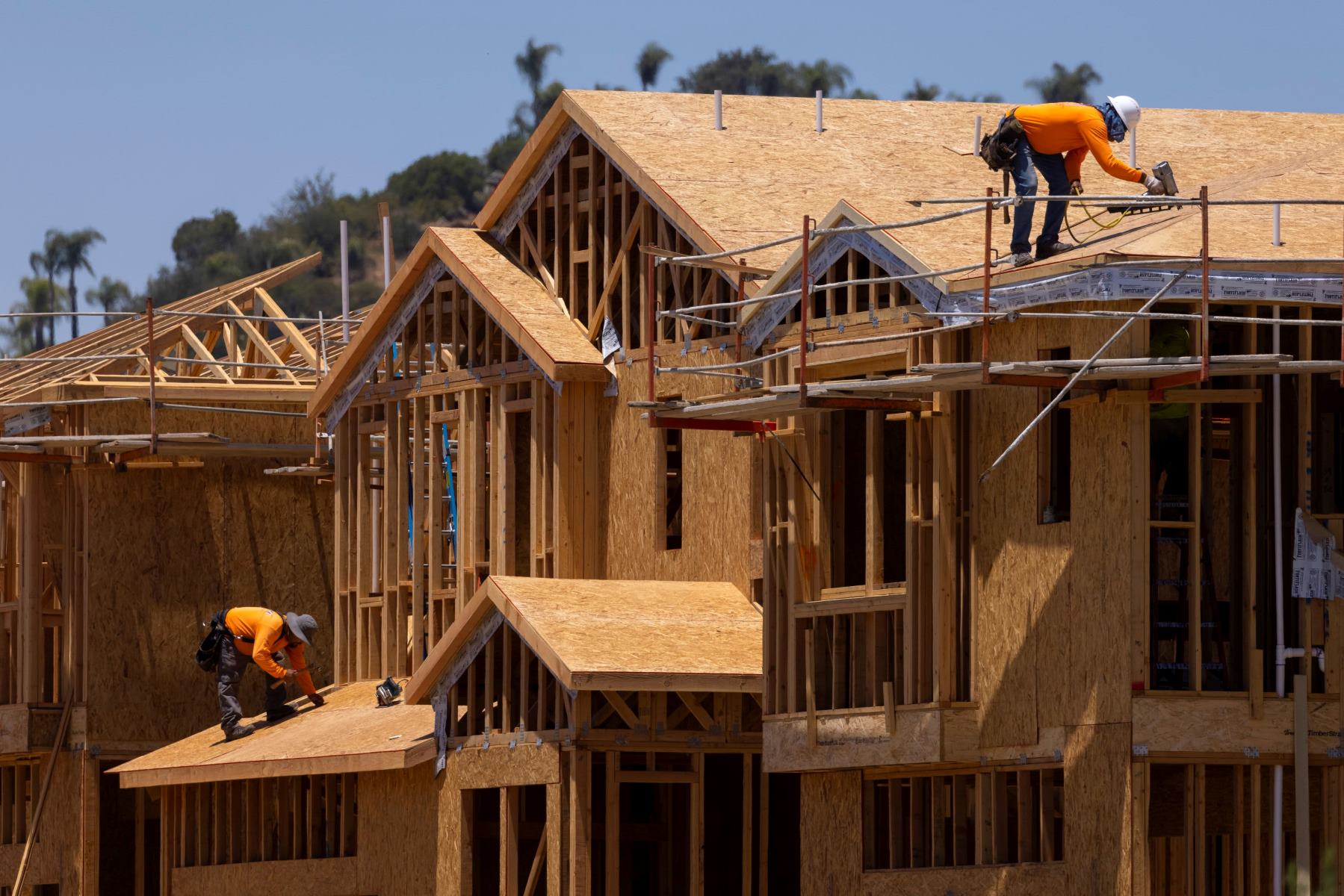

Architecture & Design
List Of Design Decisions When Building A House
Modified: October 20, 2024
Discover the key design decisions when building a house. Explore various architecture design concepts to create your dream home.
(Many of the links in this article redirect to a specific reviewed product. Your purchase of these products through affiliate links helps to generate commission for Storables.com, at no extra cost. Learn more)
Introduction
A house is more than just a shelter; it’s a reflection of personal style, values, and needs. Building a house involves making a multitude of design decisions that will shape the look, functionality, and overall appeal of the structure. From the placement of windows to the choice of building materials, each decision contributes to the overall design and livability of the house.
In this article, we will explore a comprehensive list of design decisions when building a house. Whether you are a homeowner embarking on a new construction project or an architect looking for valuable insights, this guide will provide you with essential considerations to create a well-designed and functional home.
Each stage of the design process plays a crucial role in ensuring a successful outcome, from conceptualizing the layout to selecting the finest details of the finishes. By approaching each decision thoughtfully, you can create a house that not only meets your needs but also exceeds your expectations.
We will delve into various design considerations, including location and orientation, size and layout, structural system, building materials, exterior and roof design, plumbing and electrical layouts, heating, ventilation, and air conditioning (HVAC), flooring and finishes, lighting design, furniture and fixtures, storage and organization, landscaping, sustainability and energy efficiency, as well as safety and security systems. Additionally, we will touch on budgeting and cost control, as it is essential to maintain a balance between design aspirations and financial feasibility.
Ultimately, the goal is to create a house that not only provides a functional and comfortable living space but also showcases your unique style, values, and personality. So let’s dive into the fascinating world of architectural design decisions and discover how they come together to shape the perfect abode.
Key Takeaways:
- Designing a house involves many decisions, from location to materials. Each choice impacts the look, feel, and functionality of the home. Balancing form and function is key for a successful outcome.
- Careful budgeting and cost control are essential when building a house. Prioritize needs, research and compare prices, and track expenses to stay within budget and achieve the desired results.
Read more: Questions To Ask When Building A House
Location and Orientation
The location and orientation of a house are fundamental design decisions that can greatly impact its functionality and energy efficiency. Here are some key considerations:
- Sunlight and Views: Consider the position of the sun throughout the day and the views you want to capture. Orienting the living areas towards the south or west can maximize natural light and provide beautiful vistas.
- Climate and Weather: Study the local climate and weather patterns. If you live in a hot climate, consider shading elements like overhangs or pergolas to reduce heat gain. In colder regions, ensure the house is well-insulated and oriented to capture sunlight for warmth.
- Site Features: Take into account the unique features of the site, such as slope, vegetation, and existing trees. Incorporate these elements into the design to minimize site disturbance and create a harmonious relationship between the house and its surroundings.
- Access and Privacy: Determine the desired level of privacy and ease of access. Consider factors like proximity to main roads, neighboring properties, and natural barriers. Strategically positioned windows and landscaping can provide both privacy and natural light.
- Zoning and Regulations: Familiarize yourself with local zoning and building regulations. Ensure the house design complies with setback requirements, height restrictions, and other regulations specific to your location.
- Sustainability: Consider the sustainability of the location and reduce the environmental impact of the house. Choose a site that minimizes transportation distances and encourages the use of renewable energy sources.
The location and orientation of a house set the stage for further design decisions. Careful consideration of these factors can enhance the livability of the house, improve energy efficiency, and create a stronger connection with the natural environment.
Size and Layout
The size and layout of a house are crucial design decisions that determine its functionality, comfort, and flow. Consider the following factors when determining the size and layout of your home:
- Needs and Lifestyle: Assess your needs and lifestyle to determine the number of bedrooms, bathrooms, and living spaces required. Consider potential future changes, such as family growth or the need for a home office or gym.
- Ergonomics: Design the layout with ergonomics in mind, ensuring that rooms and spaces are easy to navigate. Pay attention to the placement of windows, doors, and furniture to optimize circulation and create a comfortable living environment.
- Flow and Connectivity: Create a layout that promotes a smooth flow between different areas of the house. Consider open floor plans or strategically placed corridors to connect spaces and encourage interaction between family members or guests.
- Zones and Privacy: Define different zones within the house for various activities, such as sleeping, working, and entertaining. Ensure that bedrooms have privacy from the communal areas and that noise-sensitive spaces, like the study, are isolated.
- Flexibility: Design the spaces to be flexible and adaptable to changing needs. Consider multi-purpose rooms or configurable layouts that can accommodate various functions over time.
- Accessibility: Design the house to be accessible to all individuals, regardless of age or mobility. Incorporate universal design principles, such as wider doorways, accessible entrances, and no-step shower entries, to ensure inclusivity.
- Storage: Plan for sufficient storage space throughout the house. Incorporate built-in cabinets, closets, and storage solutions to minimize clutter and create a well-organized living environment.
When designing the size and layout of a house, it is essential to strike a balance between functionality and aesthetics. Consider the needs of the inhabitants and customize the layout to optimize comfort, convenience, and flexibility.
Structural System
The choice of a structural system is a critical design decision that determines the strength, stability, and overall integrity of a house. Here are some common structural systems to consider:
- Concrete and Steel: A reinforced concrete and steel structure provides excellent strength and durability. This system is commonly used for larger, multi-story houses or in areas prone to seismic activity.
- Wood Frame: Wood framing is a popular choice due to its versatility, cost-effectiveness, and ease of construction. It is commonly used for single-family homes and low-rise buildings.
- Masonry: Masonry systems, such as brick or stone, offer a timeless aesthetic and good fire resistance. However, they can be more expensive and time-consuming to construct compared to other systems.
- Structural Insulated Panels (SIPs): SIPs consist of foam insulation sandwiched between two structural panels. They provide excellent thermal efficiency and quick installation, making them ideal for energy-efficient designs.
- Timber Frame: Timber framing utilizes heavy timber beams and posts for structural support. This system offers a warm and rustic aesthetic and is often used for timber frame and log homes.
- Earth-Based Systems: Rammed earth, adobe, or straw bale construction utilize natural materials for the structural components. These systems offer excellent thermal mass and sustainability, but require specialized knowledge and construction techniques.
When selecting a structural system, consider factors such as budget, construction time, local building codes, climate conditions, and design aesthetics. It is important to work with a structural engineer to assess the suitability and safety of the chosen system based on the specific project requirements.
The structural system serves as the backbone of the house, providing stability and support. Choose a system that not only meets structural requirements but also aligns with your design vision and goals.
Building Materials
The choice of building materials greatly influences the aesthetics, durability, and environmental impact of a house. Consider the following factors when selecting building materials for your project:
- Bricks and Blocks: Bricks and concrete blocks are commonly used for exterior walls due to their durability, fire resistance, and aesthetic appeal. They are available in a variety of colors and textures to suit different architectural styles.
- Timber: Wood is a versatile and renewable material that can be used for both structural and aesthetic purposes. It offers a warm and natural look and can be sourced sustainably if certified by organizations like the Forest Stewardship Council (FSC).
- Metal: Metal materials, such as steel or aluminum, are known for their strength, longevity, and modern appeal. They are often used for structural elements, roofing, and decorative accents.
- Concrete: Concrete is a versatile material that can be used for floors, walls, and countertops. It offers durability, thermal mass, and design flexibility, allowing for various textures and finishes.
- Glass: Glass is an essential material for windows, doors, and skylights. It provides natural light, views, and a sense of openness. Choose energy-efficient glazing to minimize heat loss or gain.
- Sustainable Materials: Consider incorporating sustainable materials, such as bamboo, cork, recycled glass, or reclaimed wood. These materials minimize environmental impact and promote a healthier indoor environment.
- Insulation: Insulation materials, such as fiberglass, cellulose, or spray foam, are crucial for energy efficiency and thermal comfort. Choose materials with high R-values to minimize heat transfer.
- Finishes: Select finishes, such as flooring, countertops, and cabinetry, that are durable, aesthetically pleasing, and easy to maintain. Options include hardwood, tile, laminate, engineered stone, and solid surface materials.
When choosing building materials, consider factors such as durability, maintenance requirements, environmental impact, and compatibility with the architectural style. It is essential to balance aesthetics with functionality and long-term sustainability.
Remember, the choice of building materials not only shapes the appearance of your house but also contributes to its performance and impact on the environment. Choose wisely to create a home that is not only visually pleasing but also sustainable and durable.
Read more: Biggest Regrets When Building A House
Exterior Design
The exterior design of a house plays a significant role in its overall aesthetic appeal and creates a lasting first impression. Consider the following aspects when designing the exterior of your home:
- Architectural Style: Determine the architectural style you want to achieve, such as modern, traditional, farmhouse, or Mediterranean. Research and explore different styles to find inspiration for your design.
- Materials and Finishes: Choose materials and finishes that complement the architectural style and create visual interest. Consider using a combination of materials, such as stone, wood, brick, or metal, to add texture and depth to the facade.
- Color Palette: Select a color palette that harmonizes with the surroundings and reflects your personal taste. Consider the impact of colors on the perception of space. Lighter colors can make the house appear larger, while darker hues create a sense of depth and coziness.
- Roof Design: Choose a roof design that complements the architectural style and enhances the overall aesthetic appeal. Consider different roofing materials, such as asphalt shingles, clay tiles, or metal, and their durability, maintenance requirements, and energy efficiency.
- Windows and Doors: Select windows and doors that not only provide functionality but also contribute to the overall design. Consider the style, size, material, and placement of windows and doors to enhance natural light, ventilation, and views.
- Details and Accents: Incorporate architectural details and accents, such as trim work, moldings, shutters, or decorative elements, to add character and charm to the exterior design.
- Landscaping: Plan the landscaping elements, including plants, trees, pathways, and outdoor areas, to complement the architecture and enhance the curb appeal. Consider low-maintenance plants and sustainable landscaping practices to minimize water consumption and maintenance needs.
- Lighting: Incorporate outdoor lighting to highlight architectural features, provide safety and security, and create a welcoming ambiance. Consider using a combination of functional, accent, and decorative lighting options.
Remember, the exterior design of your house sets the tone for the overall aesthetic and creates a connection between the architecture and the surrounding environment. It is an opportunity to express your style and make a statement.
Take the time to carefully consider each aspect of the exterior design to create a visually appealing and cohesive look that reflects your personal taste and enhances the overall beauty of your home.
Roof Design
The roof design of a house not only protects the structure from the elements but also contributes to its overall architectural style and visual appeal. Consider the following factors when designing your roof:
- Architectural Style: Choose a roof design that complements the architectural style of your house. Different styles, such as gable, hip, mansard, or flat roofs, provide distinct looks and aesthetic character.
- Climate and Weather: Consider the climate and weather conditions in your area when designing your roof. Choose materials and slopes that are suitable for preventing water leaks and minimizing damage from wind or snow loads.
- Materials: Select roofing materials that provide both durability and visual appeal. Popular options include asphalt shingles, clay or concrete tiles, metal roofing, and slate. Consider factors such as cost, lifespan, maintenance requirements, and energy efficiency.
- Color: Choose a roof color that harmonizes with the overall color scheme of your house. Lighter colors can help reflect sunlight and regulate the temperature inside the house, while darker colors may absorb more heat.
- Shape and Pitch: The shape and pitch of your roof not only affect the aesthetics but also impact the functionality of the house. Consider factors such as drainage, snow accumulation, and attic space when determining the roof pitch.
- Roofing Accessories: Explore various roofing accessories, such as dormers, skylights, chimneys, and vents, to add architectural interest and functionality to your roof design. Ensure these elements are integrated seamlessly with the overall design.
- Sustainability: Consider incorporating green roofing techniques, such as installing solar panels or incorporating vegetation, to improve energy efficiency and reduce the environmental impact of your roof.
The roof design should not only be aesthetically pleasing but also functional and able to withstand the elements. Consult with a roofing professional and consider local building codes and regulations to ensure a safe and durable design.
Take the time to carefully select the roof design and materials that best suit your house and can endure the test of time. A well-designed roof not only adds visual charm but also provides protection and enhances the overall value of your home.
Windows and Doors
Windows and doors are not only functional elements of a house but also contribute to its aesthetic appeal and connectivity with the outdoors. Consider the following factors when designing your windows and doors:
- Style and Design: Choose window and door styles that align with the overall architectural style of your house. Options include casement, double-hung, sliding, or awning windows, and various door styles such as French doors, sliding doors, or pivot doors.
- Material Selection: Select materials for windows and doors that offer durability, energy efficiency, and low maintenance. Common options include wood, aluminum, vinyl, or fiberglass. Consider the specific requirements of each space and balance aesthetics with function.
- Glass Type: Choose the appropriate glass type for your windows and doors to enhance energy efficiency and comfort. Double or triple-glazed windows with low-emissivity (low-E) coatings can help reduce heat transfer, improve insulation, and block harmful UV rays.
- Window Placement: Consider the orientation of your house and the desired views when determining the placement of windows. Optimize natural light, ventilation, and access to outdoor spaces to enhance the overall livability of the interior.
- Window Treatments: Think about how you will dress your windows, whether with blinds, curtains, or shades. Consider privacy, light control, and aesthetic preferences when choosing window treatments.
- Doors: Pay attention to the design, size, and material of your doors. Entry doors should provide security, insulation, and a welcoming appearance. Consider the flow between indoor and outdoor spaces, and the accessibility for individuals of all abilities.
- Hardware and Finishes: Select suitable hardware and finishes that complement the overall style and design of your windows and doors. Choose finishes that are both aesthetically pleasing and resistant to wear and corrosion.
- Safety and Security: Ensure that your windows and doors have suitable locking mechanisms and meet safety regulations. Consider features such as shatterproof glass, security screens, or smart locking systems.
The design of your windows and doors should not only enhance the visual appeal of your house but also provide functionality, natural light, and a seamless connection to the outdoor environment. Carefully consider each element to create a harmonious and inviting living space.
Consult with a professional to ensure proper installation, energy efficiency, and compliance with local building codes and regulations. The right choice of windows and doors will add value, comfort, and beauty to your home for years to come.
Plumbing Layout
The plumbing layout of a house is a crucial aspect that ensures the efficient distribution of water and the proper functioning of plumbing fixtures. Consider the following factors when designing the plumbing layout of your home:
- Placement of Fixtures: Determine the location of plumbing fixtures, such as sinks, toilets, showers, and bathtubs, in relation to each other and the water supply. Consider convenience, functionality, and privacy when deciding on their placement.
- Water Supply System: Design the water supply system to ensure adequate water pressure and flow throughout the house. Plan for the location of the main water supply line, shutoff valves, and pressure regulators to facilitate maintenance and repairs.
- Drainage System: Develop a drainage system that properly disposes of wastewater and prevents clogs or backups. Ensure that the layout allows for sufficient slope in the pipes to promote proper drainage and connect to the main sewer line or septic tank.
- Hot Water Distribution: Design a hot water distribution system that efficiently delivers hot water to the different fixtures in the house. Consider the location of the water heater, the size of the pipes, and the insulation to minimize heat loss and ensure consistent hot water supply.
- Ventilation: Install ventilation pipes to remove sewer gases and odors from the plumbing system. Proper venting also prevents siphoning and ensures the smooth flow of waste and wastewater.
- Energy Efficiency: Consider energy-efficient plumbing fixtures and technologies, such as low-flow toilets, water-saving faucets, and tankless water heaters. These choices can reduce water consumption and help lower utility bills.
- Sustainability: Incorporate sustainable practices, such as rainwater harvesting and graywater recycling systems, to reduce water usage and promote environmental stewardship.
- Accessibility: Ensure that the plumbing layout meets accessibility requirements, allowing ease of use for individuals with disabilities. Consider features such as grab bars, barrier-free showers, and properly positioned plumbing fixtures.
It is crucial to consult with a professional plumber or plumbing contractor to ensure that the plumbing layout meets local building codes and regulations. They can provide expertise in optimizing the design for functionality, efficiency, and safety.
Consider your household needs and lifestyle when designing the plumbing layout. A well-thought-out plumbing system will provide convenience, efficiency, and peace of mind, enhancing the overall comfort and functionality of your home.
Read more: Must-Haves When Building A House
Electrical System
The electrical system of a house is a vital component that powers various appliances, lighting, and technological devices. When designing the electrical system for your home, consider the following factors:
- Load Calculation: Determine the electrical load requirements of your house to ensure that the electrical system can safely handle the expected demand. Consider the number of outlets, lighting fixtures, and major appliances that will be used simultaneously.
- Circuitry: Plan the circuitry layout, including the number and location of electrical circuits and distribution panels. Grouping electrical outlets and fixtures together on separate circuits helps prevent overloading and improves safety.
- Outlets and Switch Placement: Strategically locate electrical outlets, switches, and dimmers to provide convenient access and control throughout the house. Install outlets in areas where they will be needed, such as near workspaces and entertainment areas.
- Lighting Design: Design a lighting layout that enhances the functionality and ambiance of each room. Consider a combination of general lighting, task lighting, and accent lighting to create a well-lit and visually appealing environment.
- Energy Efficiency: Incorporate energy-efficient lighting fixtures, such as LED bulbs, to reduce energy consumption and minimize the environmental impact. Install motion sensors or dimmer switches to further optimize energy efficiency.
- Wiring: Choose wiring materials that meet safety standards, such as copper or aluminum wiring. Ensure proper gauge and insulation to handle the electrical load and prevent overheating or electrical hazards.
- Power Outlets: Plan for the appropriate number and location of power outlets in each room to accommodate the electrical needs of various devices and appliances. Install dedicated circuits for high-power-consuming appliances like refrigerators, air conditioners, or home theaters.
- Smart Home Integration: Consider incorporating smart home technology into the electrical system design, allowing for remote control of lighting, temperature, security systems, and energy monitoring.
- Safety Measures: Install ground fault circuit interrupters (GFCIs) in areas prone to moisture, such as bathrooms, kitchens, and outdoor outlets, to protect against electrical shocks. Smoke detectors and carbon monoxide detectors should also be positioned strategically throughout the house.
Consult with a licensed electrician to ensure that the electrical system design adheres to local electrical codes and regulations. They will provide expertise in safely implementing the design and conducting proper electrical load calculations.
By carefully planning the electrical system design, you can ensure a safe, functional, and efficient distribution of power throughout your home, meeting the electrical needs of your household while promoting energy efficiency and user convenience.
When building a house, consider the orientation of the building to maximize natural light and minimize energy usage for heating and cooling.
Heating, Ventilation, and Air Conditioning (HVAC)
The heating, ventilation, and air conditioning (HVAC) system of a house is essential for maintaining a comfortable indoor environment. When designing the HVAC system for your home, consider the following factors:
- Climate and Weather: Assess the climate and weather conditions in your area to determine the heating and cooling requirements of your home. Choose HVAC equipment that is suitable for the local climate and can efficiently provide the desired level of comfort.
- Heating System: Select an appropriate heating system, such as a furnace, heat pump, or radiant heating, based on factors like fuel availability, energy efficiency, and cost-effectiveness. Consider the size and insulation of the house when determining the heating capacity required.
- Cooling System: Choose a cooling system, such as central air conditioning or ductless mini-split units, to maintain comfortable temperatures during the hot months. Consider the energy efficiency, zoning capabilities, and noise levels of the cooling equipment.
- Ventilation: Plan for proper ventilation to ensure a continuous supply of fresh air and control indoor air quality. Consider mechanical ventilation systems, such as energy recovery ventilators (ERVs) or heat recovery ventilators (HRVs), to recover heat or coolness from the exhaust air.
- Ductwork: Design the ductwork layout for efficient air distribution throughout the house. Optimize the size and configuration of ducts to minimize pressure losses and ensure balanced airflow to each room.
- Thermostat and Controls: Install programmable thermostats or smart controls to optimize energy usage and provide convenient temperature control. Advanced features like zoning capabilities allow for individual temperature control in different areas of the house.
- Energy Efficiency: Choose HVAC equipment with high energy efficiency ratings, such as Energy Star-certified models. Consider incorporating energy-saving features like variable speed motors or geothermal systems to reduce energy consumption and lower utility bills.
- Maintenance and Service: Plan for easy access to HVAC equipment, including air filters, for regular maintenance and repair. Regular professional maintenance ensures the efficient and reliable operation of the system.
- Noise Control: Consider noise reduction measures in the HVAC system, such as vibration isolators or duct insulation, to minimize noise transmission and provide a quiet indoor environment.
Consult with HVAC professionals to properly size the equipment, design the ductwork, and ensure compliance with local building codes and regulations. They will provide expertise in selecting and installing the right HVAC system for your home.
By carefully designing the HVAC system, you can ensure optimal comfort, energy efficiency, and indoor air quality in your home, creating a pleasant and healthy living environment for you and your family.
Flooring and Finishes
The choice of flooring and finishes in a house not only contributes to its aesthetic appeal but also affects the functionality, durability, and maintenance requirements. Consider the following factors when selecting flooring and finishes for your home:
- Functionality: Evaluate the function of each space to determine appropriate flooring options. Different areas may require different flooring materials based on their use, such as high-traffic areas, wet spaces, or quiet areas.
- Material: Choose a flooring material that aligns with your style preferences, lifestyle, and maintenance preferences. Options include hardwood, laminate, ceramic or porcelain tile, vinyl, carpet, or natural stone.
- Durability: Consider the durability of the flooring material, especially in high-traffic areas or homes with pets or children. Ensure that the flooring material can withstand wear and tear over time without excessive maintenance or replacement.
- Maintenance: Assess the maintenance requirements of different flooring options. Some materials, like hardwood or natural stone, may require regular sealing or polishing, while others, like vinyl or laminate, are easier to clean and maintain.
- Eco-Friendly Options: Consider eco-friendly flooring materials, such as bamboo, cork, or reclaimed wood, to minimize environmental impact and promote sustainable living.
- Aesthetics: Select flooring and finishes that enhance the overall aesthetic appeal and ambiance of your home. Consider colors, patterns, and textures that complement the architectural style and interior design theme.
- Comfort and Acoustics: Evaluate the comfort level and acoustic properties of different flooring materials. Some materials, like carpet or cork, provide a softer and quieter surface, while others, like tile or hardwood, offer a harder and more reflective surface.
- Coordination and Continuity: Ensure a cohesive look and flow throughout the house by coordinating the flooring materials and finishes between different areas. Consider transitions and thresholds between different flooring materials for a seamless appearance.
- Budget: Establish a budget for flooring and finishes and determine cost-effective options that meet your requirements. Consider the long-term investment of higher-quality materials versus the immediate cost savings of lower-quality alternatives.
Visit showrooms or consult with flooring specialists to explore different materials, finishes, and design options. They can provide expert advice on selecting the right flooring and finishes to create a stylish, functional, and long-lasting environment.
The choice of flooring and finishes significantly impacts the overall look and feel of your home. By considering these factors, you can create a space that not only reflects your personal style but also meets your practical needs and enhances the value of your property.
Lighting Design
Lighting design is a crucial aspect of creating a functional, visually appealing, and comfortable living space. Consider the following factors when designing the lighting for your home:
- Layers of Light: Incorporate multiple layers of light to create depth and flexibility in your lighting design. These layers include ambient lighting, task lighting, and accent lighting, each serving a specific purpose and adding a different dimension to the space.
- Ambient Lighting: Establish a baseline of general lighting to illuminate the entire room. This can be achieved through ceiling-mounted fixtures, recessed lighting, or even natural light sources like windows and skylights. Ambient lighting creates a comfortable and well-lit environment for everyday activities.
- Task Lighting: Install task lighting in areas where focused illumination is needed, such as study areas, kitchen countertops, or reading nooks. Task lighting should be bright enough to support specific tasks without causing excessive glare or shadows.
- Accent Lighting: Use accent lighting to highlight architectural features, artwork, or focal points in the room. This can be achieved with spotlights, track lighting, or picture lights. Accent lighting adds visual interest and creates a sense of drama and ambiance.
- Natural Lighting: Maximize the use of natural light by incorporating windows and skylights strategically. Position windows to capture daylight and provide views while considering privacy and solar heat gain. Natural light promotes a sense of well-being and reduces the need for artificial lighting during the day.
- Lighting Controls: Install dimmers, switches, and smart lighting controls to provide flexibility in adjusting the intensity and mood of the lighting. This allows you to create different atmospheres for different activities or occasions.
- Color Temperature: Consider the color temperature of light fixtures to achieve the desired ambiance and mood. Warmer color temperatures (2700K-3000K) create a cozy and intimate feel, while cooler color temperatures (4000K-5000K) provide a crisp and energizing atmosphere.
- Energy Efficiency: Choose energy-efficient lighting solutions, such as LED bulbs or compact fluorescent lamps (CFLs), to reduce energy consumption and lower utility bills. LED technology offers long lifespans, low maintenance, and a wide range of color options.
- Lighting Placement: Ensure the proper placement of lighting fixtures to achieve optimal illumination. Consider the room layout, furniture arrangement, and task requirements when determining the placement of overhead lights, sconces, or pendant lights.
Consult with lighting designers or professionals to create a lighting plan that suits your specific needs and enhances the aesthetics and functionality of your home. They can provide expertise in selecting appropriate fixtures, creating balanced lighting compositions, and maximizing energy efficiency.
A well-designed lighting scheme elevates the overall atmosphere, functionality, and mood of your home. By carefully considering these factors and incorporating various layers of light, you can transform your space into a welcoming and visually stunning environment.
Read more: Extra Expenses When Building A House
Furniture and Fixtures
Choosing the right furniture and fixtures for your home is essential to create a functional, comfortable, and visually appealing living space. Consider the following factors when selecting furniture and fixtures:
- Functionality: Determine how each room will be used and select furniture that aligns with the specific needs of each space. Consider factors such as seating capacity, storage requirements, and the intended purpose of the room.
- Size and Scale: Measure the dimensions of each room to ensure that the furniture fits comfortably without overwhelming the space. Consider the scale of the furniture in relation to the room’s size and the size of other furniture pieces.
- Style and Aesthetics: Choose furniture and fixtures that reflect your personal style and complement the overall design theme of your home. Consider the architectural style of the house and select pieces that harmonize with the existing elements.
- Comfort: Prioritize comfort when selecting furniture, especially for seating areas. Test the furniture to ensure appropriate cushioning, back support, and ergonomics. Consider factors such as seat height, depth, and softness.
- Quality: Select furniture and fixtures of good quality that are built to last. Look for durable materials, sturdy construction, and attention to detail in the craftsmanship. Invest in furniture that will withstand daily use and maintain its appearance over time.
- Flexibility and Multifunctionality: Opt for furniture that provides flexibility and can adapt to different needs. Consider pieces with storage compartments, convertible designs, or modular elements that can be rearranged as required.
- Lighting Fixtures: Choose lighting fixtures that complement the style of your home and provide sufficient illumination. Consider the type of lighting needed for each space, whether ambient, task, or accent lighting, and select fixtures that enhance the functionality and mood of the room.
- Plumbing Fixtures: Select plumbing fixtures, such as faucets, sinks, and showerheads, that combine functionality with aesthetics. Consider factors such as water efficiency, ease of use, and durability when choosing fixtures for the kitchen and bathrooms.
- Hardware and Accessories: Pay attention to the details by selecting suitable hardware and accessories. Choose handles, knobs, and pulls that enhance the overall design and functionality of cabinets, drawers, and doors.
- Budget: Set a budget for furniture and fixtures and prioritize your spending based on the importance of each item. Allocate a larger budget for key pieces of furniture that will be used frequently and invest in high-quality items that are built to last.
Visit furniture stores, showrooms, or consult with interior designers to explore different options and get expert advice on selecting furniture and fixtures that suit your needs and style. Consider your personal preferences, comfort, and the overall functionality of your home to create a space that truly reflects your lifestyle and taste.
Remember, furniture and fixtures play a significant role in creating a welcoming and fully functional home. By carefully considering these factors, you can curate a space that is both comfortable and visually captivating.
Storage and Organization
Effective storage and organization solutions are crucial for maintaining a clutter-free and functional living space. Consider the following factors when designing storage and organization systems for your home:
- Assess Your Needs: Determine your storage requirements by evaluating the items you need to store, such as clothing, books, kitchenware, or household supplies. Consider the quantity, size, and accessibility of each item.
- Maximize Space: Take advantage of every inch of available space in your home. Utilize wall space with shelves, hooks, or wall-mounted storage systems. Consider underutilized areas such as corners, alcoves, or the space under stairs for custom storage solutions.
- Customization: Design storage solutions that cater to your specific needs. Customized cabinets, shelves, and built-in units can maximize storage capacity and efficiently organize your belongings. Consider adjustable shelves, modular units, or drawers to accommodate changing needs.
- Multi-Purpose Furniture: Select furniture pieces that offer additional storage capabilities. Opt for beds with built-in drawers, ottomans with hidden compartments, or coffee tables with shelving. These versatile pieces help maximize storage without sacrificing style.
- Closet Systems: Customize your closets with efficient storage systems that maximize space utilization. Incorporate adjustable shelves, hanging rods, shoe racks, and accessories like drawer dividers or belt/tie racks to optimize organization.
- Kitchen Organization: Design your kitchen with efficient storage solutions. Consider cabinet organizers, pull-out shelves, and drawer dividers to enhance accessibility and make the most of your pantry and kitchenware storage.
- Bathroom Storage: Maximize bathroom storage by adding vanity cabinets, shelves, or medicine cabinets. Utilize vertical space with wall-mounted organizers for toiletries and towels. Consider adding hooks or towel bars for easy access.
- Labeling and Categorizing: Clearly label and categorize storage containers, boxes, and shelves for easy identification and retrieval of items. This simple step helps maintain an organized and clutter-free environment.
- Hidden Storage: Explore creative ways to incorporate hidden storage throughout your home. Utilize hidden compartments in furniture, recessed shelving, or secret cabinets behind artwork or mirrors, providing discreet storage options.
- Declutter Regularly: Regularly declutter and streamline your possessions to avoid accumulating unnecessary items. Donate or sell items that you no longer need or use, and establish a system for managing paperwork and mail to avoid clutter build-up.
Consult with professional organizers or interior designers to receive expert advice on designing functional storage and organization systems tailored to your specific needs. They can help optimize storage spaces and create efficient systems that promote clutter-free living.
By carefully planning storage and organization solutions, you can create a well-organized and tidy living space that not only enhances your daily life but also adds to the overall aesthetic appeal of your home.
Landscaping
Landscaping is an essential aspect of creating an inviting and visually appealing outdoor space. A well-designed landscape can enhance the curb appeal of your home, provide a relaxing retreat, and connect your indoor and outdoor living areas. Consider the following factors when planning your landscaping:
- Assess Your Space: Evaluate the size, shape, and topography of your outdoor area. Analyze sunlight exposure, soil conditions, and drainage patterns to determine which plants and elements will thrive in your landscape.
- Functional Zones: Divide your outdoor space into functional zones based on your needs and preferences. Consider creating areas for entertaining, dining, gardening, relaxation, and play to maximize the usability of your landscape.
- Plant Selection: Choose plants that are well-suited to your climate, require minimal maintenance, and offer year-round interest. Consider a mix of trees, shrubs, perennials, and groundcovers to provide a variety of textures, colors, and heights in your landscape.
- Seasonal Interest: Incorporate plants that bloom at different times of the year to ensure year-round visual interest in your landscape. This includes selecting plants with colorful foliage, attractive bark, or persistent berries during the winter months.
- Hardscaping Elements: Enhance your landscape with hardscaping elements such as pathways, patios, decks, and retaining walls. Choose materials that harmonize with your home’s architecture and create visual continuity throughout your outdoor space.
- Outdoor Living Spaces: Create comfortable and inviting outdoor living areas by incorporating seating, dining areas, fire pits, or outdoor kitchens. These spaces extend your living area and provide opportunities for relaxation and entertainment.
- Water Features: Consider adding water features such as ponds, fountains, or waterfalls to create a serene and calming atmosphere. Water elements not only enhance the aesthetic appeal but also provide a soothing ambient sound.
- Outdoor Lighting: Install outdoor lighting to highlight focal points, pathways, and architectural features in your landscape. Consider a combination of ambient, task, and accent lighting to create ambiance and improve safety.
- Sustainability: Incorporate sustainable practices into your landscape design. Consider using native plants, which are adapted to the local climate and require less water and maintenance. Implement efficient irrigation systems, rainwater harvesting, and the use of organic fertilizers.
- Functionality: Ensure that your landscape design accommodates your lifestyle. Leave space for children or pets to play, create areas for gardening or growing vegetables, and consider functional storage solutions for gardening tools and equipment.
Consult with landscape designers or horticulturists to get expert advice on plant selection, irrigation systems, and overall design. They can help you create a landscape that harmonizes with your home, reflects your style, and provides an inviting outdoor haven.
Remember, a well-designed landscape not only enhances your living environment but also adds value to your property and increases overall enjoyment of your outdoor space.
Sustainability and Energy Efficiency
Incorporating sustainable and energy-efficient practices into your home not only reduces your environmental impact but also promotes long-term cost savings and a healthier living environment. Consider the following factors when focusing on sustainability and energy efficiency:
- Energy-Efficient Appliances: Choose energy-efficient appliances with high Energy Star ratings. Look for energy-saving features such as smart technology, efficient cooling and heating systems, and low-energy-consumption options.
- Insulation and Weatherproofing: Ensure proper insulation in your home to minimize heat loss and gain. Install weatherstripping, seal gaps, and upgrade windows and doors to improve energy efficiency and reduce heating and cooling costs.
- Renewable Energy Sources: Consider installing solar panels or other renewable energy systems to generate clean and sustainable electricity. Utilize solar power for heating water, generating electricity, or even charging electric vehicles.
- Water Conservation: Install water-saving fixtures such as low-flow toilets, faucets, and showerheads to reduce water consumption. Implement rainwater harvesting systems to collect and repurpose rainwater for irrigation or other non-potable uses.
- Sustainable Materials: Choose sustainable building materials for construction and renovation projects. Look for materials with recycled content, such as recycled plastic or reclaimed wood, and opt for products with certifications like Forest Stewardship Council (FSC) or Cradle to Cradle.
- Proper Waste Management: Implement effective waste management practices such as recycling, composting, and responsible disposal of hazardous materials. Reduce waste by choosing products with minimal packaging and opting for reusable alternatives.
- Natural Lighting and Ventilation: Maximize natural lighting to reduce the need for artificial lighting during the day. Orientate windows strategically to optimize natural ventilation and minimize the use of cooling systems.
- Energy-Efficient Lighting: Utilize energy-efficient lighting solutions such as LED bulbs. Install timers, motion sensors, or dimmers to control lighting usage and reduce energy consumption.
- Efficient Water Heating: Choose energy-efficient water heating systems, such as tankless water heaters or heat pump water heaters, to reduce energy usage and save on heating costs.
- Native Landscaping and Xeriscaping: Opt for native plants that are adapted to the local climate and require less water. Implement xeriscaping techniques, such as mulching and efficient irrigation systems, to minimize water usage and preserve water resources.
Consult with professionals in the field of sustainability and energy efficiency to assess the specific needs of your home and identify practical solutions. They can provide guidance on technologies, certifications, and practices that will help you achieve a more sustainable and energy-efficient living environment.
By incorporating sustainable and energy-efficient practices, you can minimize your environmental footprint and enjoy the benefits of long-term energy savings, improved indoor air quality, and a healthier overall living space.
Read more: Closing Costs When Building A House
Safety and Security Systems
Ensuring the safety and security of your home and loved ones is of utmost importance. Incorporating robust safety and security systems provides peace of mind and protects against potential threats. Consider the following factors when implementing safety and security measures:
- Home Security System: Install a comprehensive home security system that includes burglar alarms, surveillance cameras, motion sensors, and door/window sensors. Connect the system to a central monitoring station or your smartphone for real-time updates and notifications.
- Smoke and Carbon Monoxide Detectors: Install smoke detectors and carbon monoxide detectors on each level of your home and near sleeping areas. Regularly test and maintain these detectors to ensure they are in proper working order.
- Fire Suppression Systems: Consider installing fire suppression systems such as sprinklers, fire extinguishers, or fire blankets. Place them strategically throughout the house, paying close attention to high-risk areas such as the kitchen or utility room.
- Secure Entry Points: Reinforce entry points with sturdy doors, deadbolt locks, and security screens. Consider smart locks or keyless entry systems for added convenience and control over access to your home.
- Outdoor Lighting: Install outdoor lighting around the perimeter of your home to deter intruders and enhance visibility in dark areas. Motion sensor lights are particularly effective in illuminating entryways and deterring unwanted visitors.
- Home Surveillance: Consider installing surveillance cameras around your property to monitor activity and deter potential burglars. Ensure the cameras cover key areas such as entry points, driveways, and backyard spaces.
- Safety Gates and Fencing: Install safety gates and fencing around your property to create a physical barrier and discourage unauthorized access. Choose sturdy materials that match the aesthetic of your home while providing security.
- Emergency Preparedness: Develop an emergency plan and communicate it with your family members. Include procedures for evacuations, rendezvous points, and contact information for emergency services. Equip your home with emergency supplies such as first aid kits and emergency food and water.
- Smart Home Security: Consider integrating smart home technology into your security system. Use smart doorbell cameras, smart locks, and remote monitoring to have increased control and access to the security of your home.
- Child and Pet Safety: Implement measures to ensure the safety of children and pets. Install childproof locks on cabinets, secure heavy furniture to the wall, and use safety gates to restrict access to potentially hazardous areas.
Consult with security professionals or home security companies to assess your specific needs and recommend the best safety and security measures for your home. They can provide expert advice on the latest technologies and help you customize a system that fits your requirements.
By incorporating robust safety and security systems, you can protect your home and loved ones and enjoy the peace of mind that comes with knowing your dwelling is secure.
Budgeting and Cost Control
Proper budgeting and cost control are essential when building or renovating a house. By carefully managing your expenses, you can ensure that the project stays within your financial limits without compromising on quality. Consider the following factors when budgeting and controlling costs:
- Define Your Budget: Determine a realistic budget for your project by assessing your financial resources, obtaining quotes from contractors, and considering financing options. Account for both the construction costs and additional expenses such as permits, design fees, and furnishings.
- Identify Priorities: Clearly define your priorities and allocate your budget accordingly. Identify the essential elements of your project and allocate more funds to areas that matter most to you, such as architectural design, energy-efficient systems, or high-quality finishes.
- Research and Compare: Research and compare prices, materials, and services from different suppliers and contractors. Obtain multiple quotes and review them carefully to make informed decisions and achieve the best value for your money.
- Contingency Budget: Set aside a contingency budget to account for unexpected expenses or changes that may arise during the project. It is recommended to allocate around 10-15% of the total budget as a contingency to address any unforeseen circumstances.
- Cost-Saving Measures: Explore cost-saving measures without compromising on quality. This may include negotiating prices, considering alternative materials or finishes, or tackling certain aspects of the project as DIY, if feasible and within your skillset.
- Review Design and Scope: Regularly review the design and scope of the project to ensure it aligns with your budget. Consider whether modifications can be made to reduce costs without sacrificing the overall vision or functionality of the house.
- Track Expenses: Keep a detailed record of all expenses to monitor the progress of your budget. Track expenses by creating a spreadsheet or using budgeting software, categorizing expenses, and comparing them to your initial estimates.
- Communication and Documentation: Maintain clear and open communication with contractors, suppliers, and professionals involved in the project. Document all agreements, changes, and specifications to avoid any misunderstandings or disputes that may impact the budget.
- Regular Progress Meetings: Schedule regular progress meetings with your contractors to review the status of the project, discuss any cost variations, and address any concerns. This allows for timely decision-making and cost control throughout the construction process.
- Monitor Market Fluctuations: Keep an eye on the market for any price fluctuations in building materials or labor costs. By staying informed, you can make necessary adjustments to your budget or sourcing strategies to obtain favorable pricing.
Remember, effective budgeting and cost control require proactive planning, research, and ongoing monitoring. With careful management, you can ensure that your project stays on track financially while achieving your desired results.
Consult with financial advisors or professionals if needed to ensure you have a realistic budget and a solid financial plan in place for your house construction or renovation.
Conclusion
Designing and building a house involves a myriad of decisions that impact its functionality, aesthetics, and overall success. From the location and orientation to the choice of materials and fixtures, each decision contributes to creating a home that reflects your style, meets your needs, and promotes a comfortable and sustainable living environment.
By carefully considering factors such as size and layout, structural systems, building materials, exterior design, lighting, and more, you can create a home that aligns with your vision and exceeds your expectations. Incorporating sustainable and energy-efficient practices not only reduces your environmental footprint but also saves you money in the long run.
Remember the importance of balancing form and function. Each decision should not only contribute to the visual appeal of your home but also enhance its functionality and promote a sense of well-being for you and your family.
Collaborating with professionals, including architects, designers, and contractors, can provide you with expert advice and ensure that your vision is brought to life in the most effective and efficient manner possible. Regular communication, thorough research, and diligent budgeting are key to staying on track and achieving your desired outcome.
Building a home is an exciting and rewarding experience, and careful consideration in each design decision will result in a house that becomes a haven for you and your loved ones for years to come. With the right planning, attention to detail, and a touch of creativity, you can create a home that is not only beautiful and functional, but also a true reflection of your personal style and values.
Frequently Asked Questions about List Of Design Decisions When Building A House
Was this page helpful?
At Storables.com, we guarantee accurate and reliable information. Our content, validated by Expert Board Contributors, is crafted following stringent Editorial Policies. We're committed to providing you with well-researched, expert-backed insights for all your informational needs.

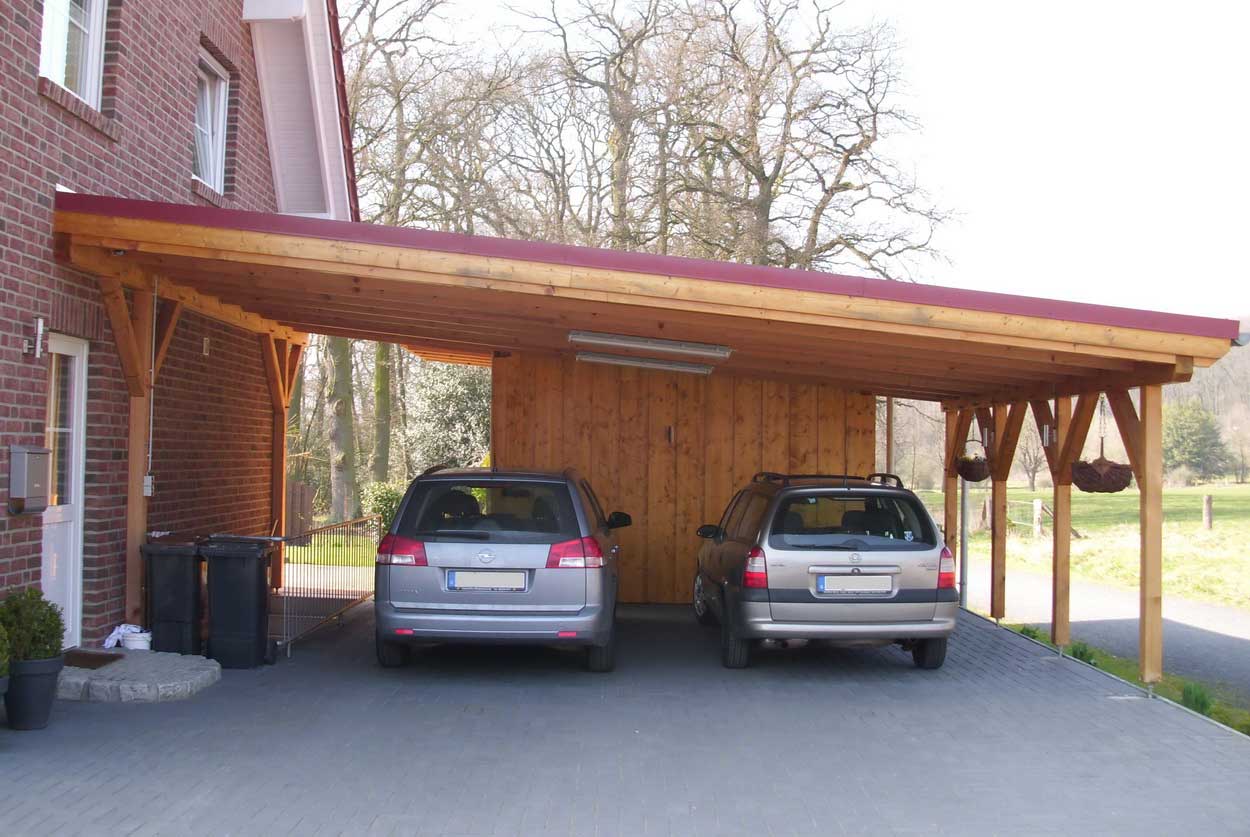
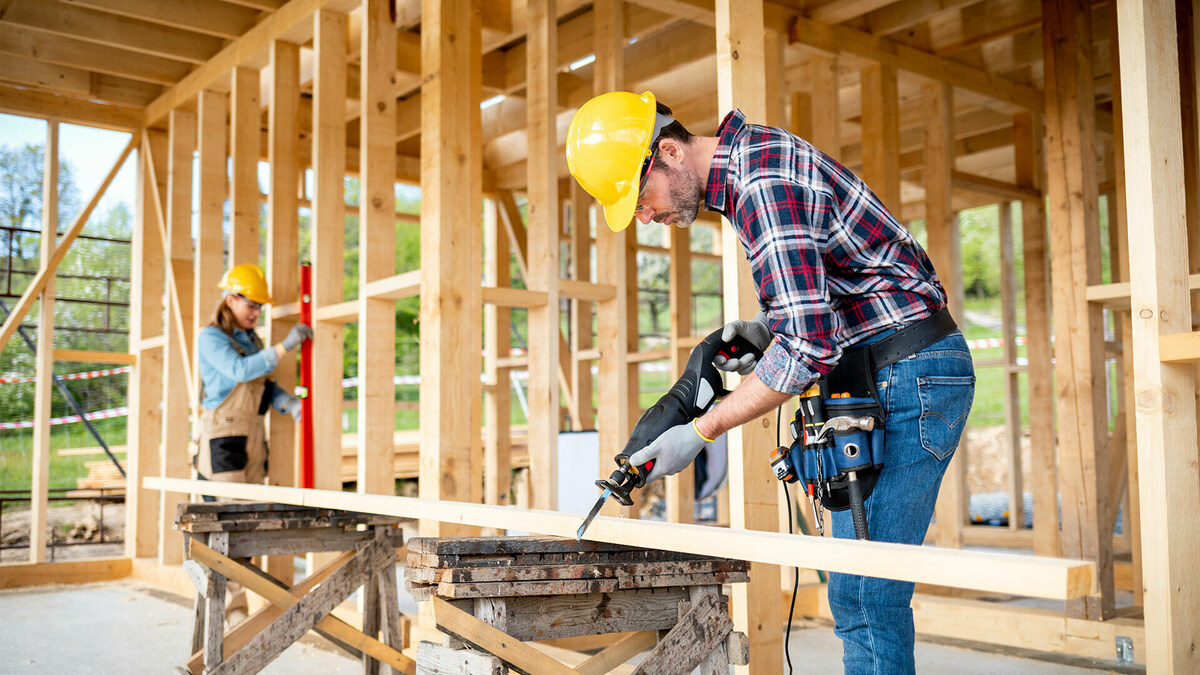
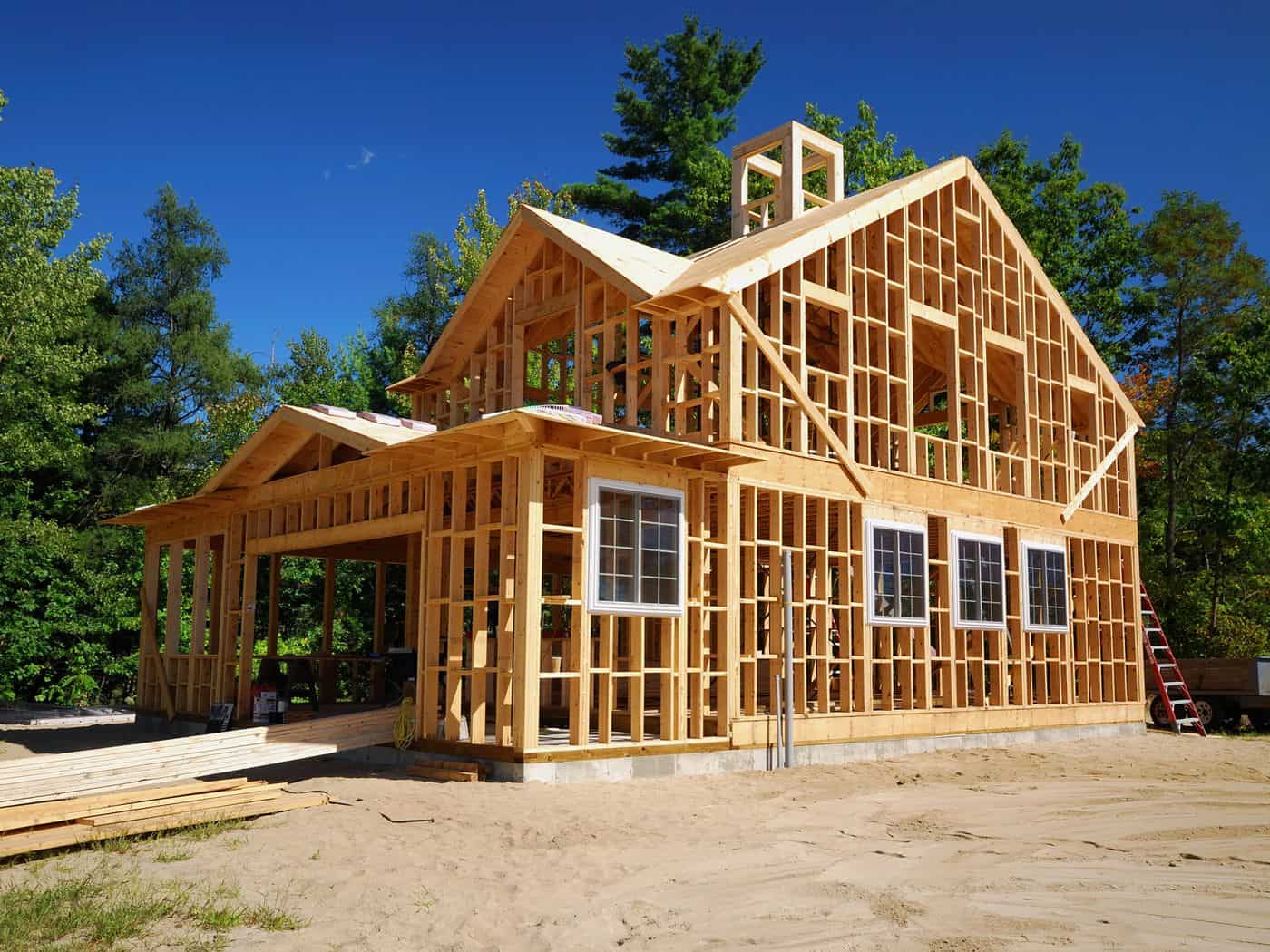
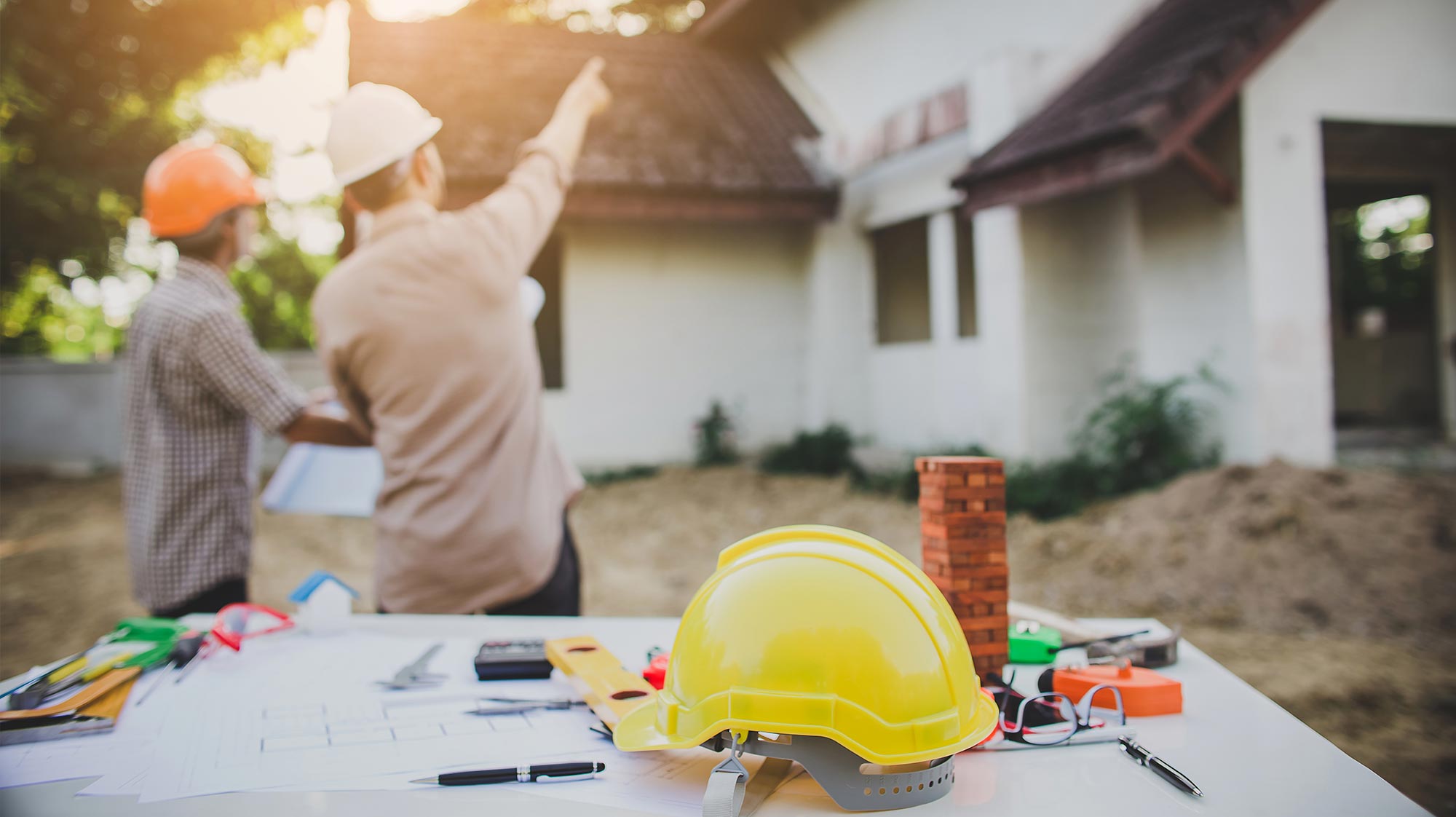
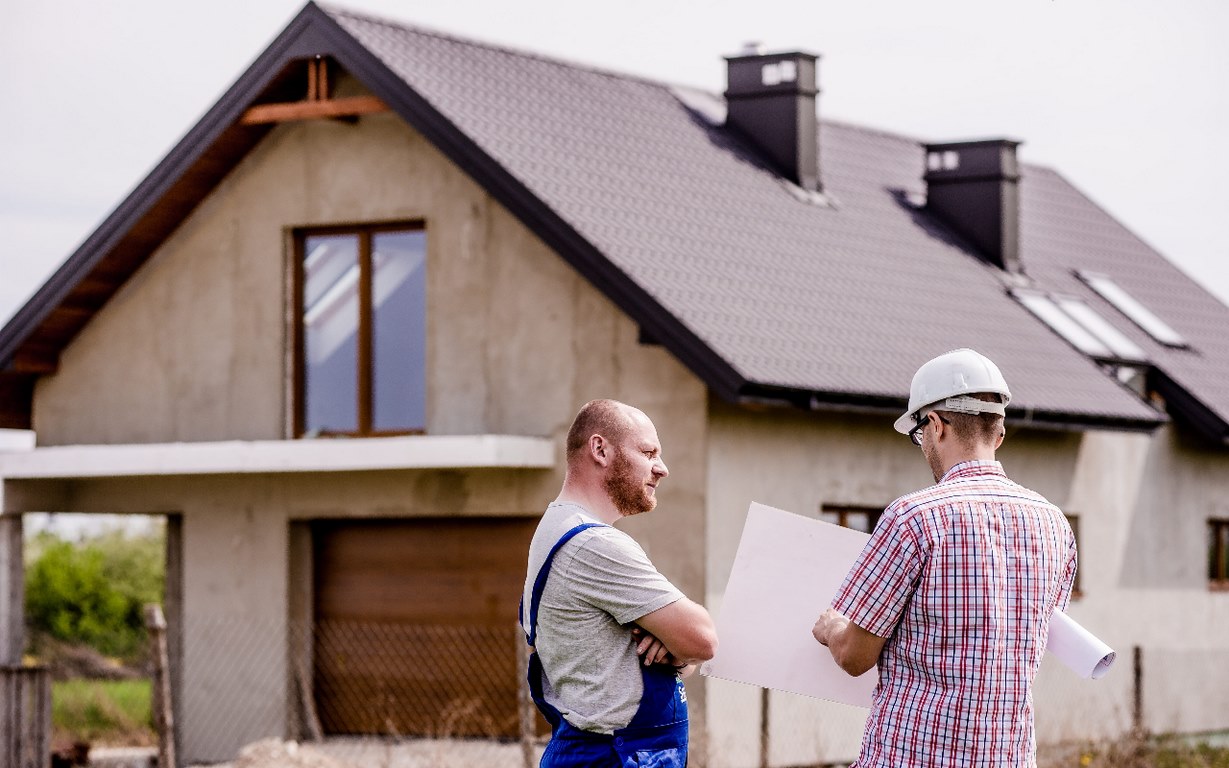

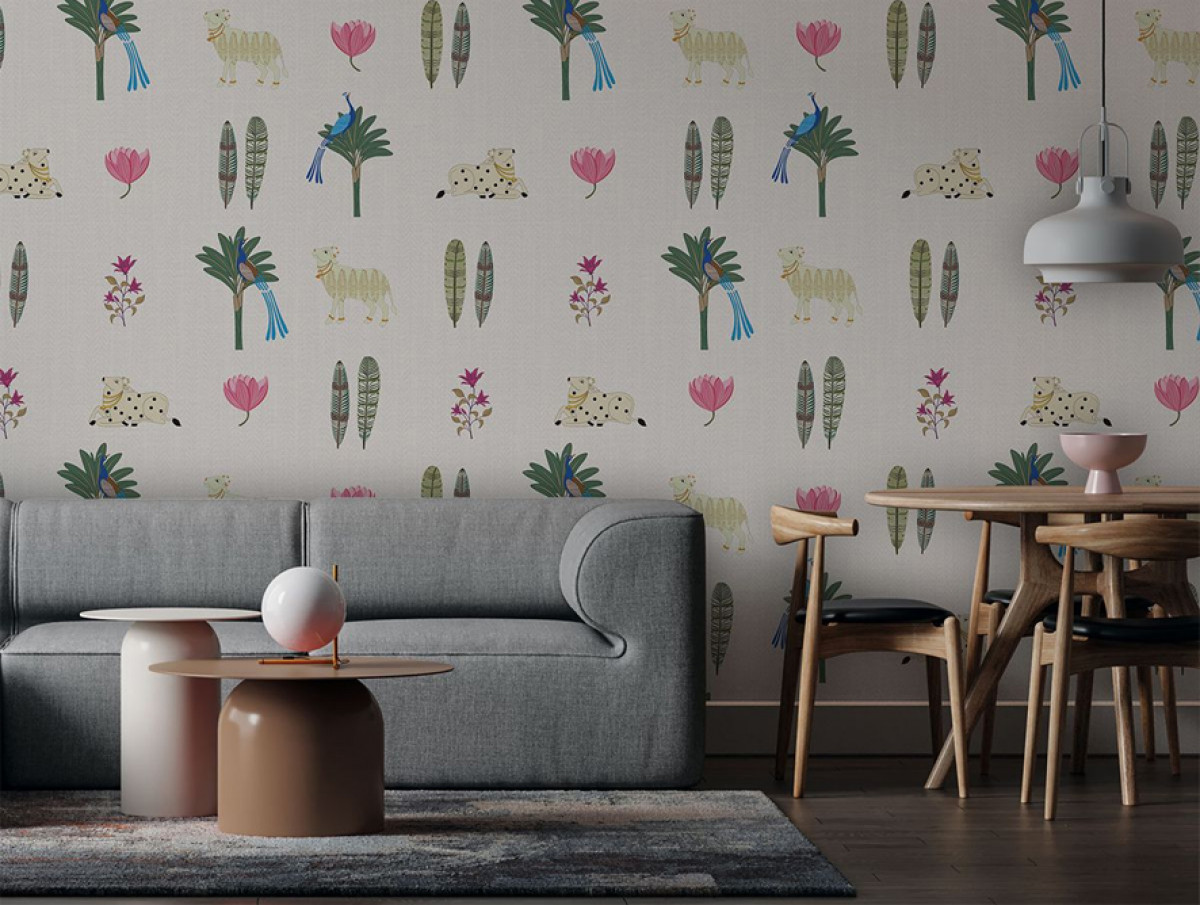


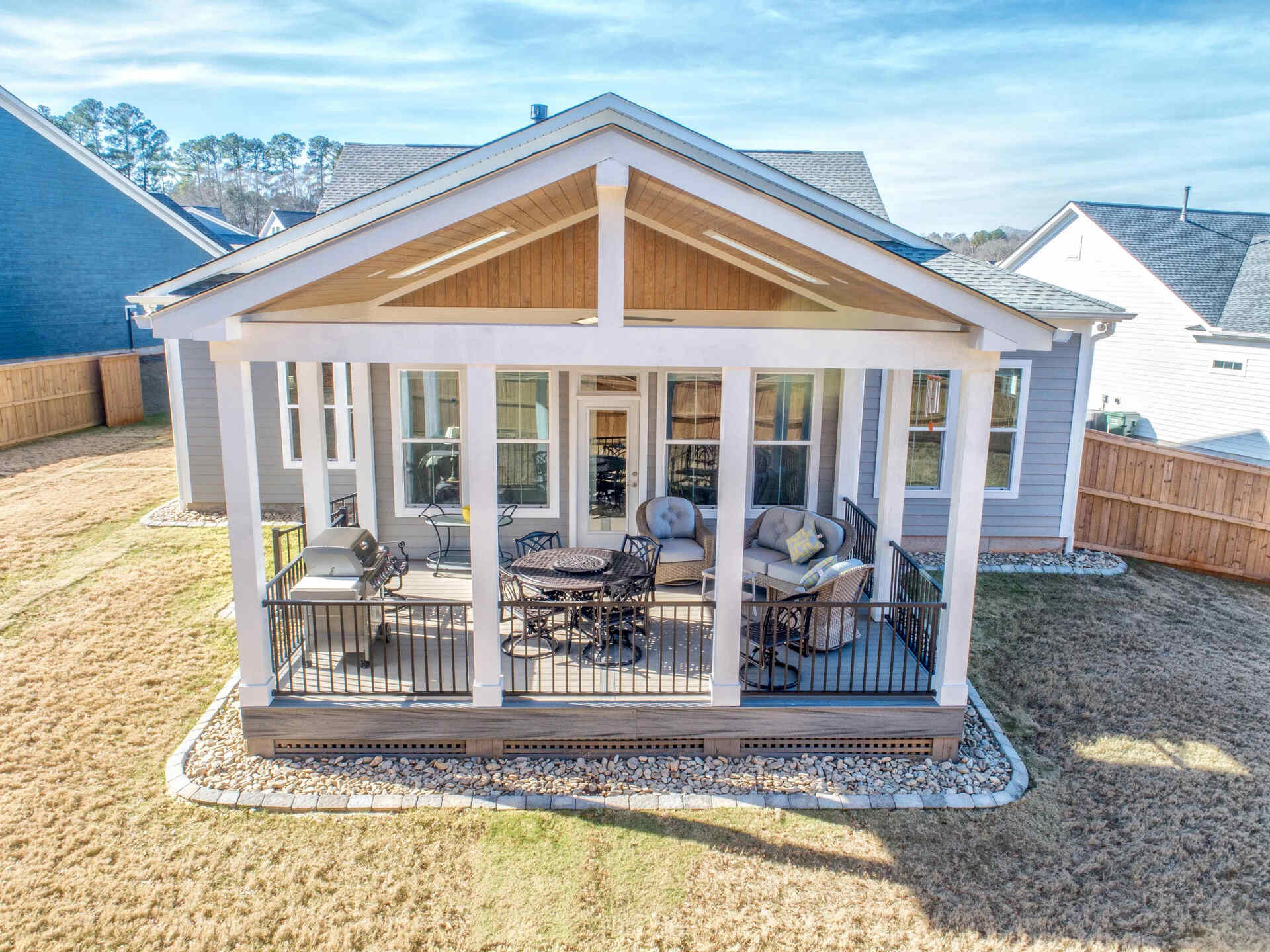

0 thoughts on “List Of Design Decisions When Building A House”